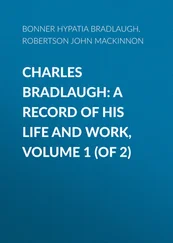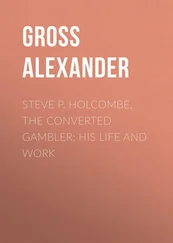Brad Stevens - Monte Hellman - His Life and Films
Здесь есть возможность читать онлайн «Brad Stevens - Monte Hellman - His Life and Films» весь текст электронной книги совершенно бесплатно (целиком полную версию без сокращений). В некоторых случаях можно слушать аудио, скачать через торрент в формате fb2 и присутствует краткое содержание. Год выпуска: 0101, Издательство: McFarland & Company, Жанр: Старинная литература, на английском языке. Описание произведения, (предисловие) а так же отзывы посетителей доступны на портале библиотеки ЛибКат.
- Название:Monte Hellman: His Life and Films
- Автор:
- Издательство:McFarland & Company
- Жанр:
- Год:0101
- ISBN:нет данных
- Рейтинг книги:4 / 5. Голосов: 1
-
Избранное:Добавить в избранное
- Отзывы:
-
Ваша оценка:
- 80
- 1
- 2
- 3
- 4
- 5
Monte Hellman: His Life and Films: краткое содержание, описание и аннотация
Предлагаем к чтению аннотацию, описание, краткое содержание или предисловие (зависит от того, что написал сам автор книги «Monte Hellman: His Life and Films»). Если вы не нашли необходимую информацию о книге — напишите в комментариях, мы постараемся отыскать её.
Monte Hellman: His Life and Films — читать онлайн бесплатно полную книгу (весь текст) целиком
Ниже представлен текст книги, разбитый по страницам. Система сохранения места последней прочитанной страницы, позволяет с удобством читать онлайн бесплатно книгу «Monte Hellman: His Life and Films», без необходимости каждый раз заново искать на чём Вы остановились. Поставьте закладку, и сможете в любой момент перейти на страницу, на которой закончили чтение.
Интервал:
Закладка:
According to Jack Hill, when Corman screened editor Mort Tubor's assembly of Dementia 13 , "he broke his pencil and threw it at the screen and stomped out of the screening room, he was so angry. There were whole scenes missing and what was there didn't cut together and didn't make sense." 2Hill remembers Coppola returning from Yugoslavia and persuading Corman that "the fault was that he hadn't been able to supervise the cut, and that all it needed was a few pickups. The editor and I knew better but didn't argue the point. Francis then shot some scenes (notably the pre-credits sequence) he had written in Ireland but had not covered there, and also some new material that I wrote." 3Corman then asked Coppola to complete The Terror , a task which involved writing new material. Coppola added two characters: Caterina, a witch played by Dorothy Neumann (repeating her characterization from Corman's The Undead ), and Gustav, a deaf-mute played by Jonathan Haze. 4Jack Nicholson, Dick Miller and Sandra Knight (who became pregnant during the shoot) also appear in these scenes, which were shot in Big Sur, but although Coppola filmed for 11 days (more than doubling the agreed-upon schedule) during January 1963, only a small part of his footage appears in the final version. As Jack Hill (who served as Coppola's sound recordist) later revealed, "The problem was that we went up to Big Sur for a location and a major portion of his script was day-for-night and he did not tell the cameraman that it was supposed to be night and the cameraman shot it for day. Because of the continuity in the story it was impossible to use that footage because it had to intercut with real night scenes. Coppola's story didn't make any sense anyway." 5According to Hellman, "Most of Coppola's footage was unusable because it didn't cut together to make a comprehensible movie." 6Nonetheless, more than ten minutes of Coppola's material proved salvageable.
Corman apparently found Coppola's new scenes for Dementia 13 no more useful than his contributions to The Terror. Since Coppola had subsequently found a higher paying job at Seven Arts, Jack Hill was asked to write and direct additional material that would provide Dementia 13 with an appropriate running time, 7while Monte Hellman was given the task of completing The Terror. Hellman's shoot took place in May 1963. Working from a new script by Hill, and with Gregory Sandor as DP, Hellman and his four cast members—Jack Nicholson, Sandra Knight (now four months pregnant), Dick Miller and Jonathan Haze (no longer playing a deaf-mute) — filmed on various locations around Los Angeles: "All my beach scenes were either shot at Leo Carrillo State Beach (all the rocky terrain) or Palos Verdes Peninsula. The forest scenes were shot in a small park in the center of Santa Barbara." 8As Charles Eastman recalls, "Monte was shooting some footage for Roger Corman off the rocks of Palos Verdes, and as I lived in the neighborhood I went down and watched him work." 9After only five days, Hellman emerged with 15 minutes of splendid material.
It Hellman could do nothing wrong, it must have seemed that Coppola could do little right, and with Coppola no longer around, Corman's animosity was redirected from the man to his film. Clearly believing that Dementia 13 could not be sold on its own merits, Corman resorted to a William Castle-style gimmick: audience members were given a test to determine whether or not they were potential axe murderers. Corman had Hellman direct a prologue in which Dr William J. Bryan, Jr. (previously "technical advisor for hypnotism scenes" on Corman's Tales of Terror ) introduced the "D-13 test." Hellman recalls shooting this "at around midnight at the end of the fifth day of The Terror. "10 Sadly, this introduction has disappeared from most prints, 11but a small part of Hellman's work is preserved in the film's trailer, which begins with a name-plate reading "William J. Bryan, Jr. MD," followed by a shot of Dr. Bryan sitting at his desk writing. A narrator says, "Introducing Dr. William J. Bryan, the first medical doctor in the United States to specialise in the practice of hypnotism." Hellman then cuts to a slightly different angle (allowing us to see some impressively framed diplomas) as the good doctor looks directly into the camera and says, "In 1960 I was consulted regarding a tragic case of a triple murderer who strangled his victims immediately after viewing the movie Psycho. His fascinating analysis under hypnosis, now a matter of record in my book, came to the attention of the producers of Dementia 13 , who asked me to devise a method of preventing a recurrence of this tragedy."
A couple of months after Hellman's shoot, Corman spent two more days directing additional scenes for The Terror (on the set of The Haunted Palace ), notably the grand finale, with Boris Karloff replaced by stand-in Dennis Jakob. 12Once again, the filming was carried out at AIP's expense, though this time with their full knowledge, since, according to Jack Hill, "by that time Roger had a deal with AIP to release the picture." 13The participating actors were Jack Nicholson, Dorothy Neumann, Dick Miller and a very pregnant Sandra Knight ("We used a secretary in the office to double for her in the full-figure shots in the water" recalls Hill 14). According to Hellman, "I was there when Roger directed these scenes on the stage. The death of Sandra was the last scene to be shot. I originally arranged for Maurice Seiderman, who had done the eye effect for Jonathan Haze's death scene, to do a reverse stop motion effect for the flesh melting away from Sandra's face, leaving only a skull. The cost was to be $500. Roger refused to pay, so he used a can of caramel syrup instead." 15Although Corman often claims that Jack Nicholson did some directing during the final day of filming, Hellman and Jack Hill both tend to doubt this. 16As Hellman told me, "My recollection is that I didn't edit my scenes, and that the editor was Gene Corso. I see, however, that he isn't the credited editor, so I may be wrong. But Roger used Gene a lot, sometimes as a sound editor, so he may have done these added scenes." 17According to Jack Hill, "Stuart O'Brien edited the footage under my supervision after the original editor, Mort Tubor, left. Gene Corso was the sound FX editor." 18Hill also directed a handful of inserts and supervised the extensive dialogue replacement ("the only time I ever directed Jack Nicholson," 19) which is particularly noticeable in Coppola's sections. On the final print, Stuart O'Brien is credited as "Film Editor" while Francis Coppola is given the baffling credit of "Associate Producer," and Hellman the almost equally baffling credit of "Location Director" ("which sounds like I scouted locations" he later complained 20), Leo Gordon and Jack Hill share the screenplay credit, John Nicholaus is the credited cinematographer, and Corman (who was responsible for only 52 of the film's 79 minutes) takes sole director credit. The Terror was finally released in September 1963, double-billed with Dementia 13.
The Terror begins with a Corman-directed pre-credits sequence showing Baron von Leppe following a trail of blood to a door, behind which lurks a decaying corpse. This scene provides an apt introduction to the film's mysteries, since the corpse has no narrative relevance whatsoever.
Hellman's first section immediately follows the opening credits. After a shot of waves crashing against rocks (nature as violence), we cut to a much calmer sea observed through a tree's branches (nature as harmony). This image dissolves to the shore observed from a high angle, with a small figure barely visible as it moves along the sea's edge. A slightly closer view reveals this to be a man on horseback, riding in a way that suggests he is on the verge of collapse. Hellman cuts to a low-angle as the rider, Andre Duvalier, takes a small object from his pocket and looks at it. A close-up shows that this object is a compass on which the indicator is spinning out of control (Hellman even zooms in to give us a better look). In the course of half a dozen shots, Hellman has moved from a landscape to a compass, a movement (involving an intricate juxtaposition of panoramic high angles and intimate low angles) from the general to the particular that will often recur in his work. The sequence continues with Andre throwing his compass away, a gesture that defines not only Andre, but every major Hellman protagonist. Although Andre tells Helene he was separated from his regiment, his later description of himself as "a weary, disillusioned soldier" suggests that this separation involved the acting out of a subconscious wish. As the surrender of the compass indicates, Andre is a wanderer, not coming from anywhere or attempting to reach a specific destination; like Allan Grey in Carl Dreyer's Vampyr , he feels compelled to investigate supernatural events because of his profound alienation from mundane reality, and although he seems to stumble across these events accidentally, the presence of Stefan inexplicably observing him from a nearby cliff during the opening sequence suggests that Andre's role in the drama is predetermined.
Читать дальшеИнтервал:
Закладка:
Похожие книги на «Monte Hellman: His Life and Films»
Представляем Вашему вниманию похожие книги на «Monte Hellman: His Life and Films» списком для выбора. Мы отобрали схожую по названию и смыслу литературу в надежде предоставить читателям больше вариантов отыскать новые, интересные, ещё непрочитанные произведения.
Обсуждение, отзывы о книге «Monte Hellman: His Life and Films» и просто собственные мнения читателей. Оставьте ваши комментарии, напишите, что Вы думаете о произведении, его смысле или главных героях. Укажите что конкретно понравилось, а что нет, и почему Вы так считаете.

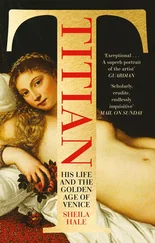
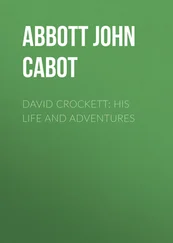
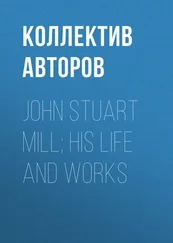
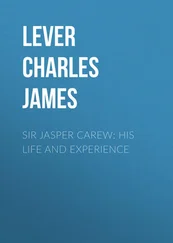
![William Frith - John Leech, His Life and Work. Vol. 1 [of 2]](/books/747171/william-frith-john-leech-his-life-and-work-vol-thumb.webp)

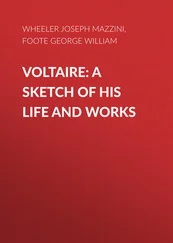
![William Frith - John Leech, His Life and Work, Vol. 2 [of 2]](/books/748201/william-frith-john-leech-his-life-and-work-vol-thumb.webp)
